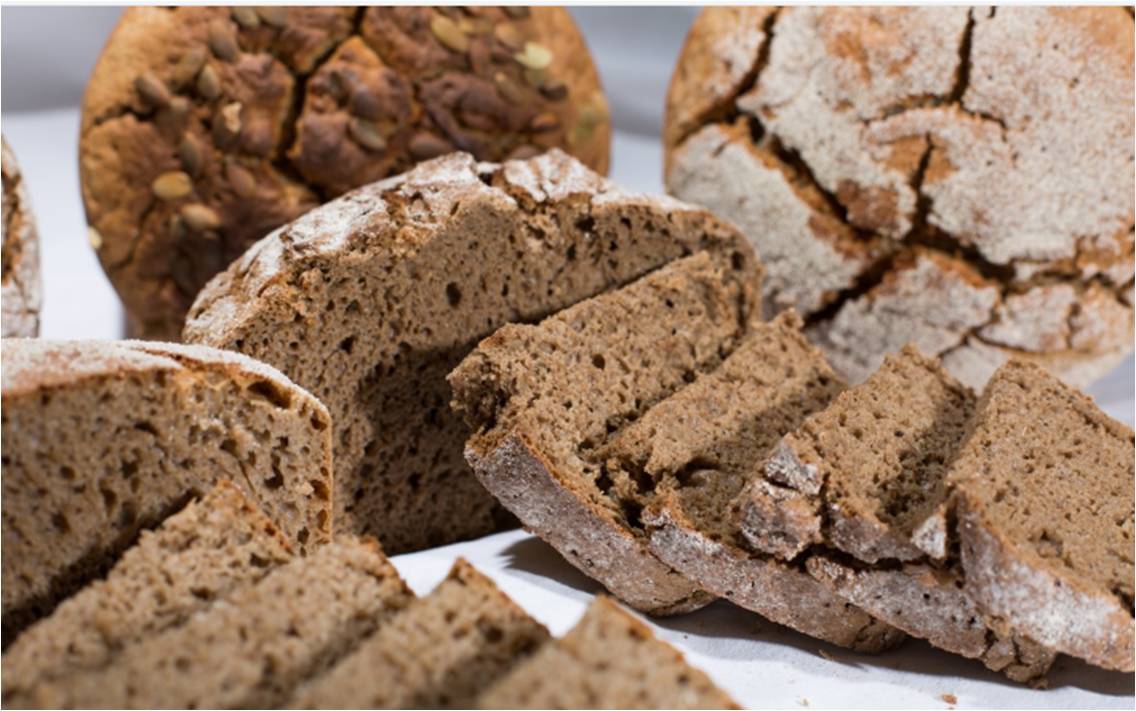Science is inclined towards brown bread rather than white bread to prevent overweight
Brown bread provides more health benefits than white bread. The consumption of white bread could slightly promote increased weight and abdominal circumference, according to the latest report by the Department of Communication’s Nutrimedia Science Communication Observatory.
The consumption of bread in Spain has fallen to less than half in half a century, from 368 grams per person per day in 1964 to 139 in 2012. One possible reason for such a reduction could be the belief that bread, particularly white bread, enhances weight gain. Does white bread really enhance overweight more than brown bread? The scientific response to this question is that, indeed, white bread could contribute more to weight increase than brown bread; but in any case such an increase would be very slight, or may even not exist, according to a recent evaluation of the scientific evidence available carried out within the framework of the Nutrimedia project of the Science Communication Observatory (OCC) at UPF’s Department of Communication, in collaboration with the Cochrane Iberoamerican Center.

This analysis comes in the wake of the public interest in this issue, as seen in the section Question to Nutrimedia on the project website. The result of the evaluation shows, on the one hand, that brown bread could contribute more health benefits than white bread. And, on the other hand, that the consumption of brown bread -unlike the consumption of white bread- does not seem to foster weight gain or increased abdominal circumference. However, as the evaluators point out, the degree of certainty of results of the investigations is low, so white bread might slightly contribute to overweight or not encourage it. And only by performing further, more rigorous studies, in particular clinical trials, will greater certainty arise.
One of the main areas of research related to this issue, the PREDIMED study, has shown that, in the framework of the Mediterranean diet, increased consumption of white bread is associated with weight gain or increased abdominal circumference, while increased consumption of brown bread is not associated with either of these increases. In any case, the possible increase would be less than two kilos and less than two cm of waist.
The researchers have proposed various explanations as to why white bread could favour overweight more than brown bread. First, although white and brown bread provide the same calories, the latter satiates more, which would help to reduce the intake of calories. Secondly, brown bread provides more fibre, which would be related to a decrease in the intestinal transit and the absorption of glucose. Thirdly, whole grains could influence the intestinal bacteria, which would affect the digestion of nutrients and obtaining energy from food.
In addition to all of this, brown bread has a lower glycemic index than white bread, that is to say, it achieves a slower blood glucose increase in blood than brown bread. This means that lower blood glucose levels and a lower insulin response are produced, which would favour the regulation of body weight.The higher a bread’s glycemic index, the faster the increase of glucose in the blood, which has been linked with an increased risk of type 2 diabetes and cardiovascular disease. The glycemic indexes of some common breads are: 61 brown, 76 white, 78 frozen white and 86 candial white.
In the context of a balanced diet adjusted to the needs of each person, carbohydrates should represent 45-60% of the calories we eat each day. These carbohydrates are ingested in the form of pulses, potatoes, cereals and flour-based foods such as bread. One ration of bread is the equivalent of three slices or a bun. Commonly, with each meal between one and two servings of any of the above mentioned foods, including bread are consumed. Taking into account the results of the investigations, most food guides will recommend prioritizing whole foods.
In some countries, to state on a food label that a food is whole it requires a considerable percentage of whole grain flour (51% in the United Kingdom and the USA, 90% in Germany); however, Spain has not established a minimum content. The market also has bread made with refined flour, to which the cereal parts are added separately later (usually bran). Refined flours lose fibre and micronutrients in the process, while the parts separately do not keep the beneficial properties of whole grain.
To view the technical report: https://tinyurl.com/y9bxsck7
